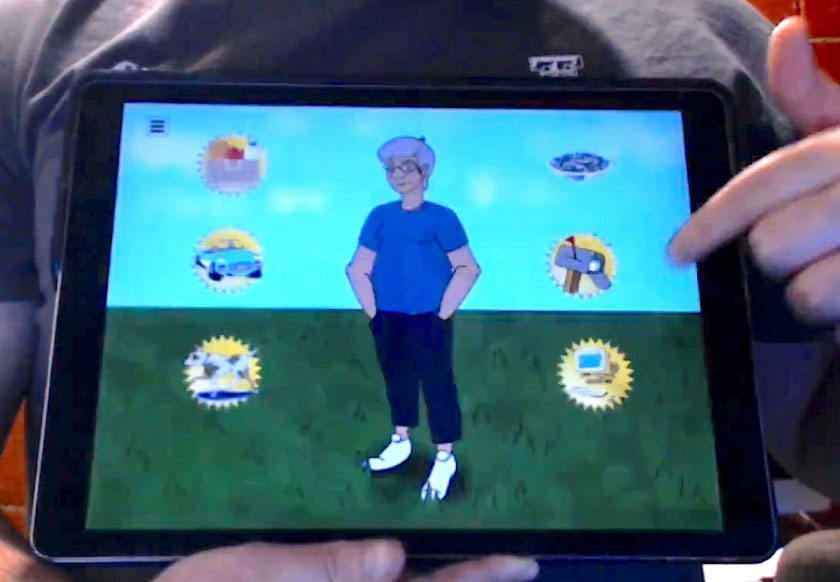App Seeks To Improve Communication for Aphasia Diagnosis and Treatment
Indiana University-Bloomington in collaboration with Texas Tech University have developed an app that will allow individuals with communication & comprehension impairments, such as aphasia, to better understand their diagnosis and treatment options.

Retrieved from IU Bloomington: (Left to right) Texas Tech University art professor Stacy Elko, IU Media School assistant professor John Velez and two Texas Tech graduate students review an early version of the app. (Courtesy photo)
Aphasia can be the result of a stroke due from brain damage in the language learning centers. Aphasia is typically characterized by the loss of the ability to understand or formulate speech. “Because comprehension is impaired in people with aphasia, it can be difficult for doctors to explain their diagnoses in a way that makes sense,” says Media School assistant professor John Velez, from Texas Tech University. “Aphasia is specifically damage to the language centers of the brain, but there are different ways to communicate with people. We understand narrative structures from a very, very young age.”
Learn more about aphasia:
“Many of the patients for a very long time, or maybe in some cases never, completely understand what’s happening to them. These patients have to deal with doctors who maybe don’t have the best bedside manner and are used to talking to patients in a certain way where they spout out a bunch of medical jargon really quickly and then leave because their time is very precious and they’re trying to do as much as possible,” Velez said.
The developed app, known as the Visual Interactive Narrative Intervention (VINI), offers an interactive platform that can be repeated multiple times to enhance the understanding of those with aphasia. VINI will provide new solutions to the patient-provider communication crisis in communication disorders.
“Each patient is going to be slightly different, and their ability to comprehend information is going to be greatly increased if they have some control over the narrative,” Velez said. “We give them the power to kind of decide what activities in that everyday life look like for that main character.”

Retrieved from IU Bloomington: The Visual Interactive Narrative Intervention is in a prototype research stage. (Courtesy photo)
Source: Indiana University Bloomington








